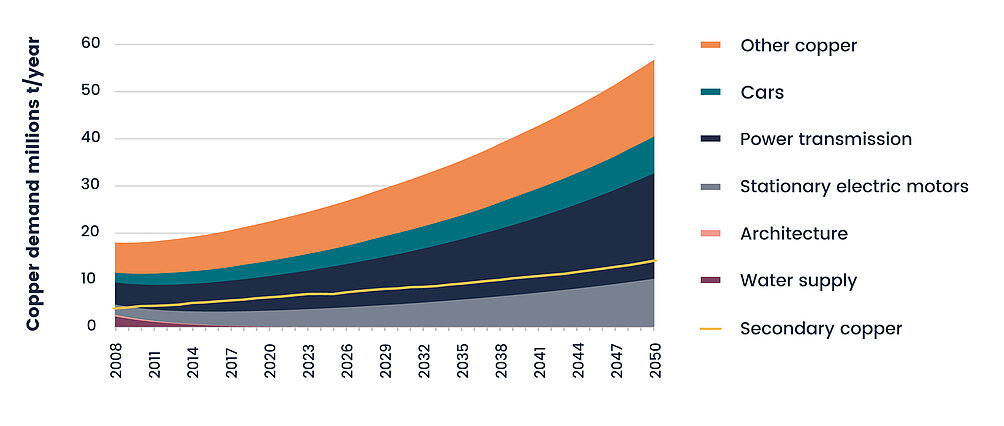Copper Ore – the key to an electrified world.
Switching from fossil to renewable to cut carbon emissions increases the demand for copper.
Reducing fossil fuels for energy supply – either mobile or stationary – drives a growing demand for one limiting factor: copper. Copper is a necessary raw material for generators, converters, transformers, and motors. Copper wire has to connect places of electrcity supply – like offshore windfarms – with major customer sites inland. A more diversified grid needs increesed interconnectivity to balance electricity supply and demand - every single second.
Studies suggest that demand will grow threefold during the next two decades.






